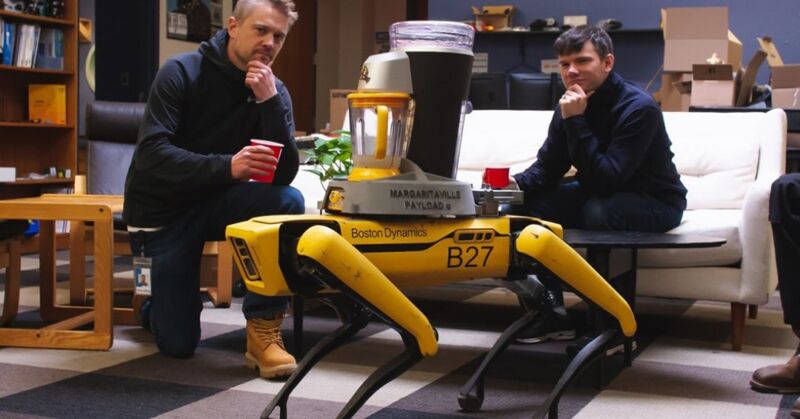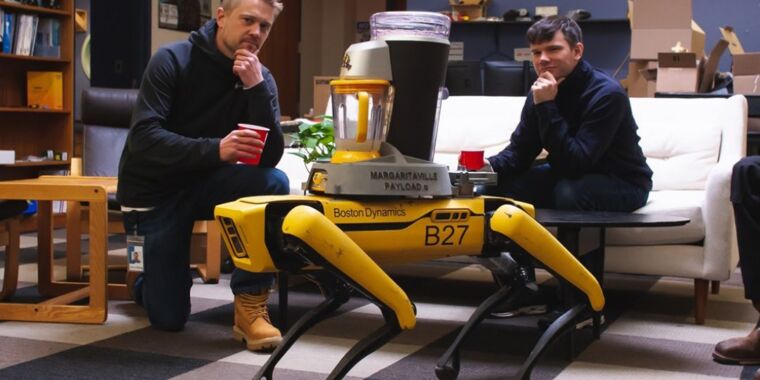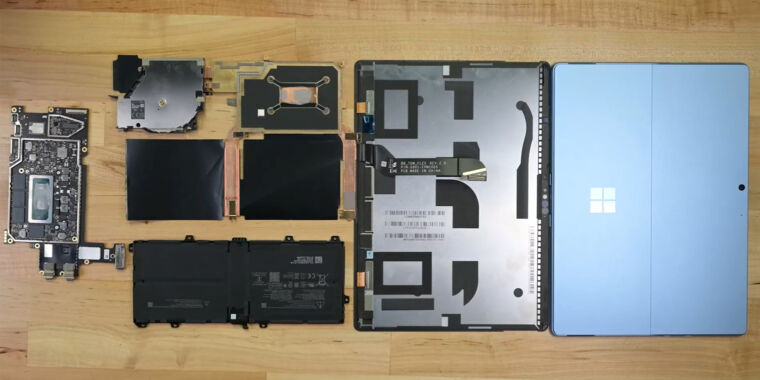
Will robots take over the world? Will our new machine overlords be generous gods or cruel taskmasters? A new research project isn’t going to answer these questions, but it aims to highlight how humans perceive and interact with some of our automatons in public.
Researchers at the University of Texas at Austin recently received expanded funding from the National Science Foundation to continue their work studying human-robot interactions. To do this, the team plans to release four-legged robots around the university campus and collect data on what it finds. The project will begin in 2023 and run for five years.
“When we deploy robots in the real world, it’s not just a technical problem, it’s actually a socio-technical problem,” Joydeep Biswas, assistant professor of computer science in the College of Natural Sciences and member of the research team, told Ars.
Big bot on campus
The team plans to use two varieties of “dog-like” robots made by Boston Dynamics and Unitree. The research team will set up a network, and UT Austin community members—students, staff, et cetera—will be able to use an app on their smartphones to deliver goods like hand wipes and sanitizer. The researchers plan to start with two robots, but Biswas said they would add more throughout the research.
While deployed, the robots will inevitably run into (possibly literally) pedestrians, cyclists, scooter riders, and larger vehicles. The researchers will watch and study the interactions between these mobile humans and machines. The robots will be monitored either in-person or remotely so the researchers can collect data about how the robots interact with the humans they encounter and stop the robots if they act in undesirable ways. The team will also create a research database to collect the data from the study and investigate how we can deploy autonomous robots in human environments, “not just for five minutes or for an hour, but for years at a time,” Biswas said.
Through the work, Biswas and his colleagues hope to learn about how humans and robots interact, but also how robots can signal their intentions—how they can communicate the actions they are about to take, particularly in complex situations where there are humans, bikes, cars, and scooters. Additionally, the study will look at how robots learn to recover from their mistakes. For instance, if a human misses their turn on a freeway, they don’t just instantly stop and pull a U-turn. There needs to be more work into how robots can recover from errors safely, he said.
“This is the kind of like really challenging setting which we’d like to be able to address,” Biswas said. “And I think the more unstructured environments these robots can robustly and accurately handle without being a nuisance, while still being productive, the more progress we make.”
First steps
Biswas noted, however, that there are pros and cons to doing this study on a university campus. On the plus side, the robots are more accessible to the researchers, making their jobs easier. People in a university might also be a bit more used to or comfortable around robots than, say, people in a senior care facility might be. This one is a bit of a mixed blessing, but Biswas noted that a campus is probably a better place to start.
“It’s an easier audience to work with… they might be a bit more welcoming to these robots, and which is actually probably good to start with,” compared to, like, an old folk’s home, he said.
Companies such as Amazon and FedEx have recently axed or scaled down their robotic delivery programs. According to Biswas, there could be numerous reasons for this, including economic rationales. But his and his colleagues’ upcoming research efforts are looking at the future of robotics, potentially several years down the line, “not things today.”








